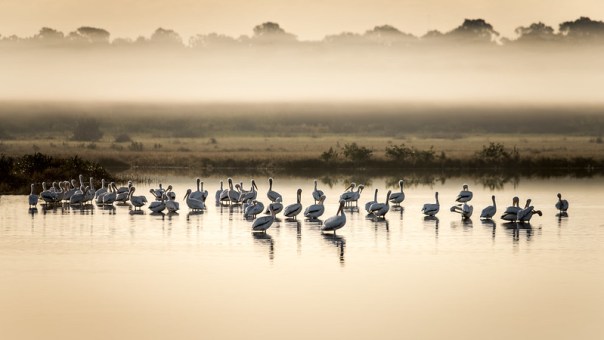Florida’s blessed with many places where you can see Nature and / or animal life. There are captive animals in zoos / parks / attractions. There are anthropogenic places like Orlando Wetlands and Viera Wetlands, where human activities and management can greatly enhance opportunities for animals. And then there are places like Merritt Island National Wildlife Refuge and the Tosohatchee Wildlife Management Area (lets call it TWMA for short) where large areas with little human intervention can approach true wilderness.
If you’ve driven the Beachline toll road (528) from Orlando to Cocoa, you’ve passed through TWMA. It’s spread out over 30,000 acres along 19 miles of the St. Johns River in east Orange County. It has a variety of natural communities including rivers / streams / lakes; freshwater marsh; Cypress swamps; Wet Flatwoods; Forested Wetlands; and Pine Flatwoods.

Grassy Trail – In addition to dirt roads running throughout TWMA, there are lots of trails to walk or bike.
Activities at TWMA include hunting, fishing, hiking, bicycle riding, horseback riding, canoeing and kayaking, camping, and scenic driving. There’s a daily entry fee and hours are 8am to sunset. As long as it hasn’t rained too much, the dirt roads are passable – even with a two-wheel drive car. So everyone can see much of the area. Hiking trails lead off from parking areas on the roads so you can get even further out into the wilderness.

Lonesome lifeless pine – Pine Flatwoods at TWMA
eBird lists 162 species seen in TWMA, vs. 293 in Merritt Island National Wildlife Refuge, so there aren’t as many kinds of birds there. And they’re spread out over a larger area, making them harder to see. During my visit, I found Great Egrets, Snowy Egrets, Tri-colored Herons, Great Blue Herons, Little Blue Herons, Osprey, Yellow Rumped Warblers, Palm Warblers, Red-winged Black Birds, Anhingas, Belted Kingfishers, Red-shouldered Hawks, an American Kestrel, Black Vultures, an Armadillo, and a deer.

Embrace the chaos – Cypress Swamp at TWMA
I hadn’t explored TWMA until recently. I’m glad I finally got down there. Although you may not see as many animals as you do in some other spots, the types of terrain are more varied and the animals are there if you’re patient. It’s a great place to catch a hint of wild Florida out along the St. Johns River. Definitely worth a visit!
TWMA is about 25 miles east of Orlando, near Christmas. From Orlando, take S.R. 50 east to Taylor Creek Road. Turn south on Taylor Creek Road and the entrance will be on the east.

“Sure, it’ll hold: you go first” – A sturdy and well maintained bridge across a stream at the southern end of TWMA
You can click on the photos above to get to larger versions on Flickr, and this set has a few more images from Tosohatchee.
Thanks for stopping by and reading my blog. Now – go make some photos!
©2014, Ed Rosack. All rights reserved.












